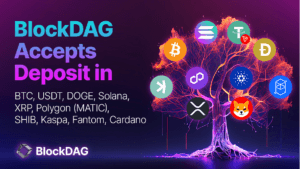Deep Dive into Defi & Yield Farming
Defi, or decentralized finance, is a new vision of banking and financial services based on peer-to-peer payments using blockchain technology. Defi, using blockchain, enables “trust-less” banking, bypassing conventional financial intermediaries such as banks or brokers.

What does it mean for investors? Defi claims to enable investors to “become the bank” by allowing them to lend money peer-to-peer and earn better rates than standard bank accounts.
Investors may also move money swiftly and easily anywhere in the globe, and they can access their accounts using digital wallets without incurring conventional banking costs.
Here we’ll look at Defi, yield farming, and liquidity pools.
What is Yield Farming?
Yield farming is the technique of maximizing returns via the use of decentralized finance (Defi). On a Defi network, users lend or borrow bitcoin and receive cryptocurrency in exchange for their services.
Farmers that desire to boost their crop production might use more complicated strategies. Yield farmers, for example, might continually transfer their cryptos between several lending platforms to maximize their profits.
A few basic facts:
- Yield farming is the technique through which token holders maximize their earnings across many Defi platforms.
- Yield farmers give liquidity to multiple token pairings while earning cryptocurrency incentives.
- Aave, Curve Finance, Uniswap, and other high-yield farming methods are among the best.
- Yield farming may be risky owing to market fluctuation, rug pulls, smart contract hacking, and other factors.
What is the process of yield farming?
Yield farming lets investors earn a return by investing in a decentralized application, or dApp.
Decentralized exchanges (DEXs) are often used by yield farmers to lend, borrow, or stake coins to earn interest and speculate on price volatility. Smart contracts — bits of code that automate financial agreements between two or more parties – permit yield farming over Defi.
Farming yield types include:
Liquidity Pools:
Users deposit two currencies to a DEX to offer trading liquidity. To switch the two tokens, exchanges charge a modest fee, which is paid to liquidity providers. This charge is sometimes paid in fresh liquidity pool (LP) tokens.
Lending:
Using a smart contract, coin or token holders may lend crypto to borrowers and receive interest on the loan.
Borrowing:
Farmers may use one token as security to get a loan from another. The borrowed monies may then be used to cultivate produce. In this manner, the farmer retains their original holding, which may grow in value over time, while also collecting a dividend on their borrowed coins.
Staking:
In the universe of Defi, there are two types of staking. The most common type is on proof-of-stake blockchains, where a user is compensated for pledging their tokens to the network in exchange for security.
The second option is to stake LP tokens gained by providing liquidity to a DEX. Users may earn yield twice since they are compensated in LP tokens for delivering liquidity, which they can then invest to gain additional interest.
Calculating Farm Yield Returns
Annualized yield returns are often used. Over the course of a year, the anticipated returns are estimated.
Annual percentage rate (APR) and annual percentage yield (APR) are two often used measures (APY). APR does not take into account compounding (reinvesting profits to create higher returns), but APY does.
Remember that the two measures are just forecasts and estimates. Even short-term benefits are difficult to predict with precision. Why? Yield farming is a fiercely competitive, fast-paced sector with constantly shifting incentives.
If a yield farming approach is successful for a while, other farmers will swarm to take advantage of it, and it will eventually cease to offer large profits.
Defi will have to develop its profit estimates since APR and APY are outdated market measurements. Because of DeFi’s quick speed, weekly or even daily predicted returns may make more sense.
Popular Defi Protocols
LunaFi
LunaFi is a decentralized betting system in which you take on the role of the house. We are developing a platform in which developers, liquidity providers, and consumers may engage in a fair and trustworthy ecosystem. Liquidity providers deposit into house pools to get a part of the profit and receive incentives in $LFI as well.
Lunabets is the protocol’s initial application. It is a non-custodial betting dAPP that makes use of LunaFi smart contracts and liquidity pools to enable trustless payments. Users are rewarded with $LFI, which they may collect from LunaFi in addition to betting.
Primex
The Primex Finance protocol facilitates trustless loan operations in the same way that existing decentralised lending platforms do. This implies that investors may simply lend assets to other parties without needing to know whether or not the other party can be trusted. Borrowers, on the other hand, may use these funds to engage in cross-DEX, cross-margin trading.
Primex Finance also provides various advantages to lending cash. Profit-sharing in the protocol is far more advantageous to all participants since successful margin trading produces higher returns than other investments. This implies that not only do borrowers gain more money, but lenders also make more money when they provide liquidity.
Conclusion
Those wishing to expand their knowledge of DeFi beyond the fundamentals of cryptocurrency trading should continue with caution and ensure that they engage with a trustworthy counterparty. Though DeFi’s returns are appealing, don’t allow the possible return to blind you to the other hazards.
Any tiny profits via yield farming might be swiftly wiped out by a downturn in cryptocurrency markets, and blatant frauds or theft could wipe out your crypto fortune much quicker.









